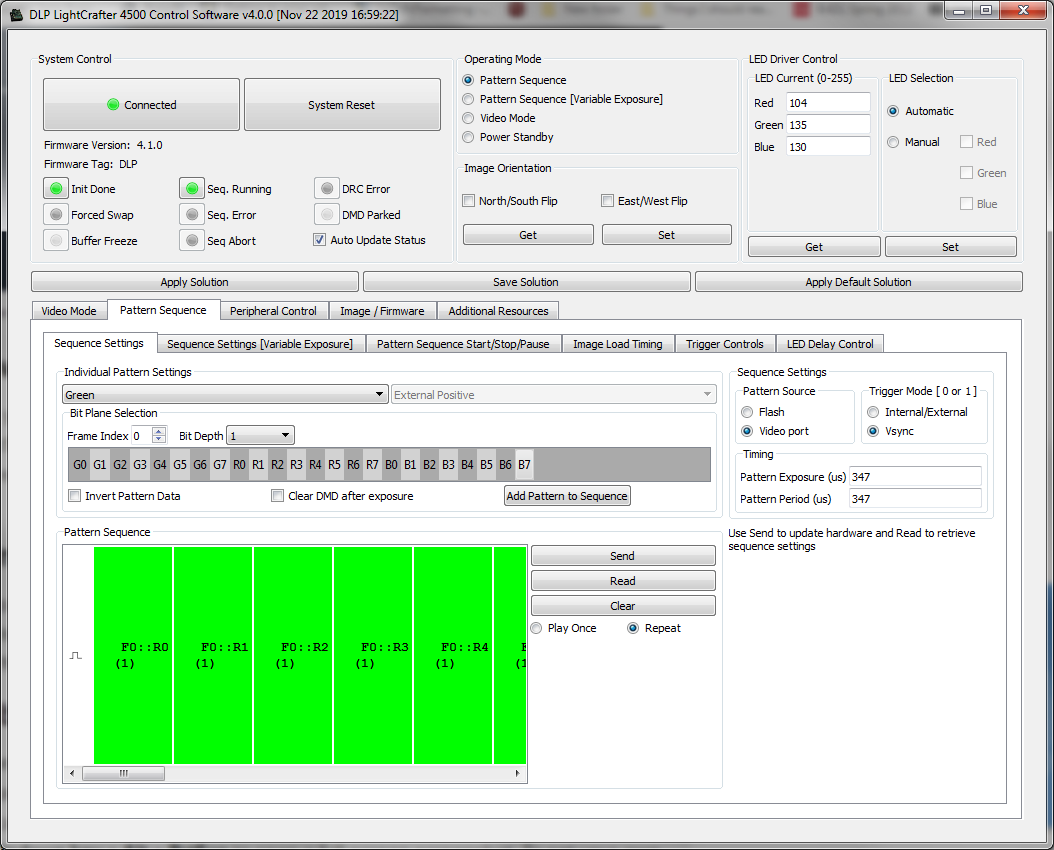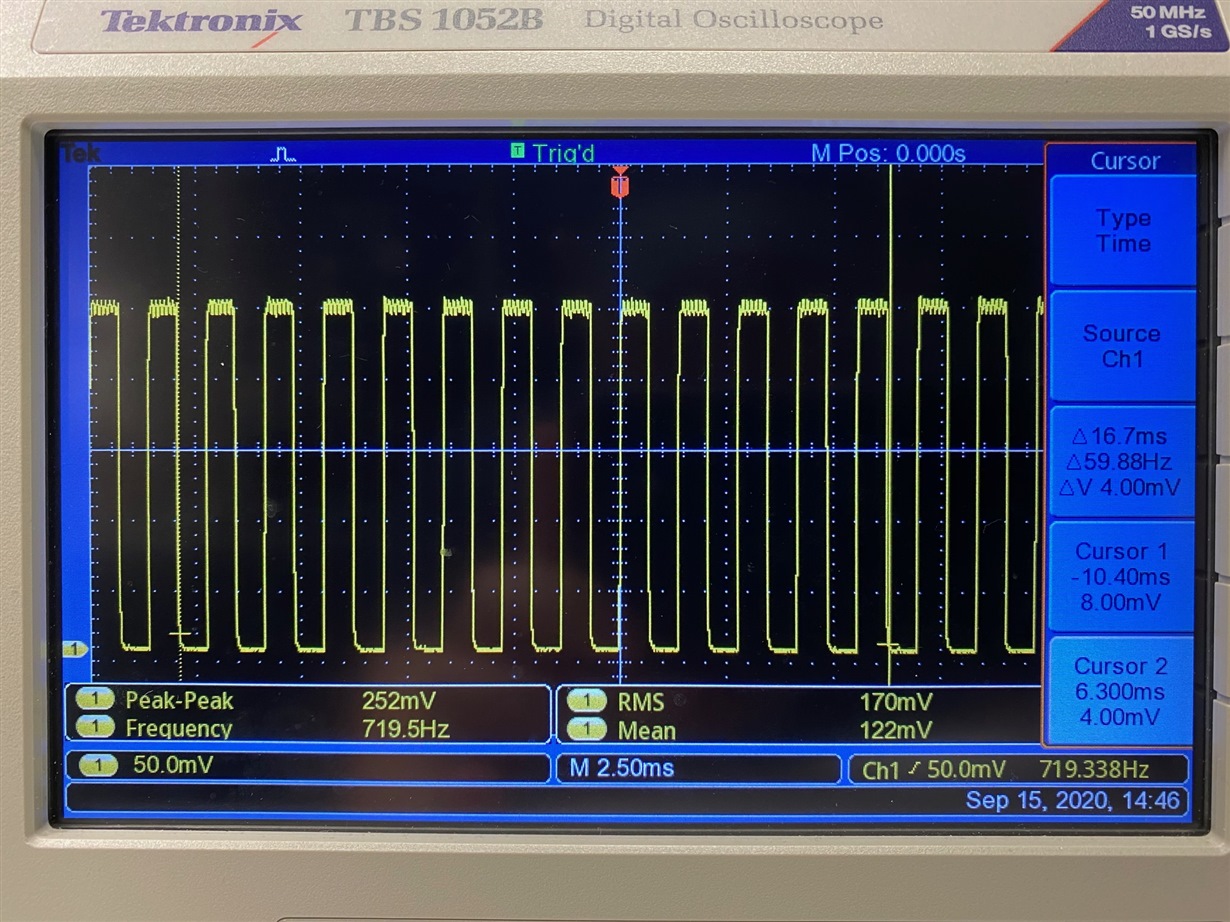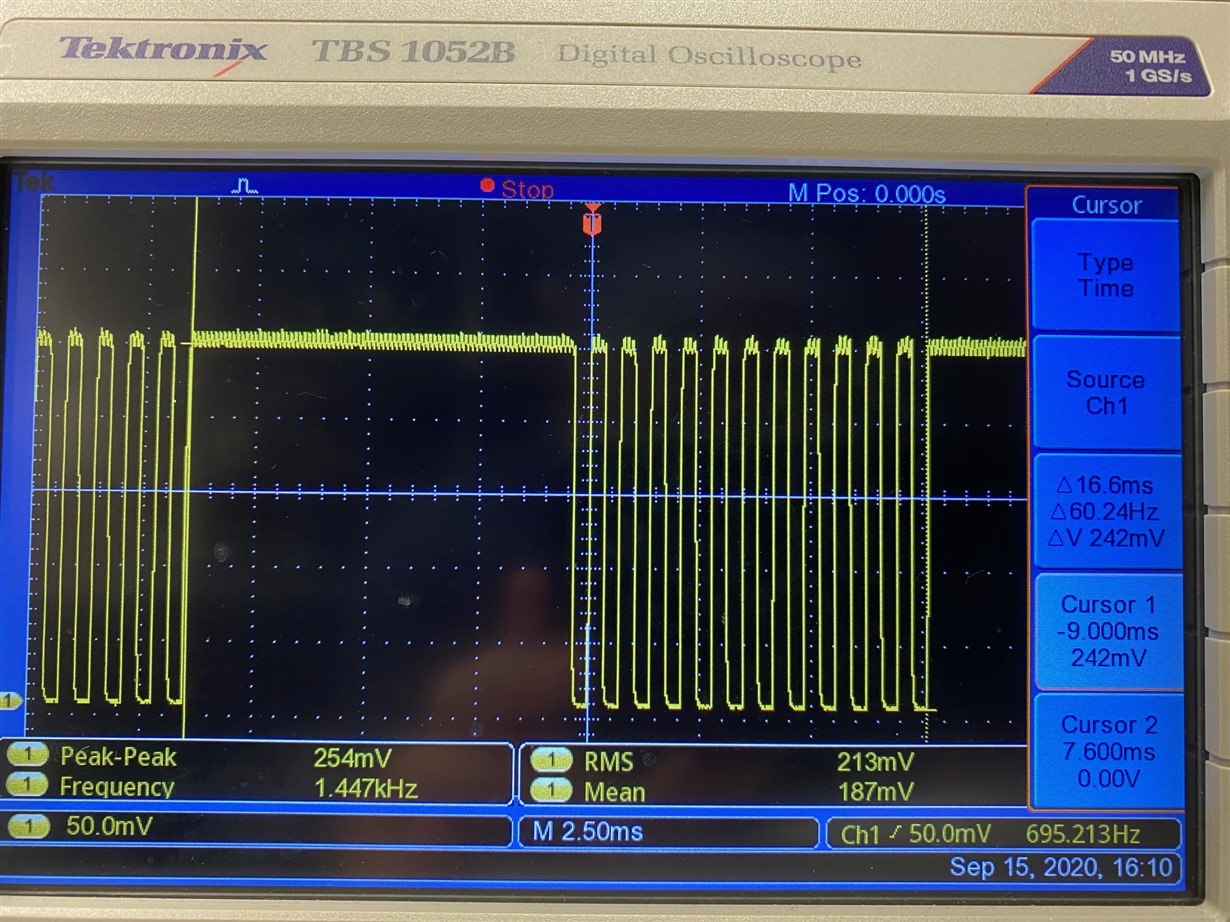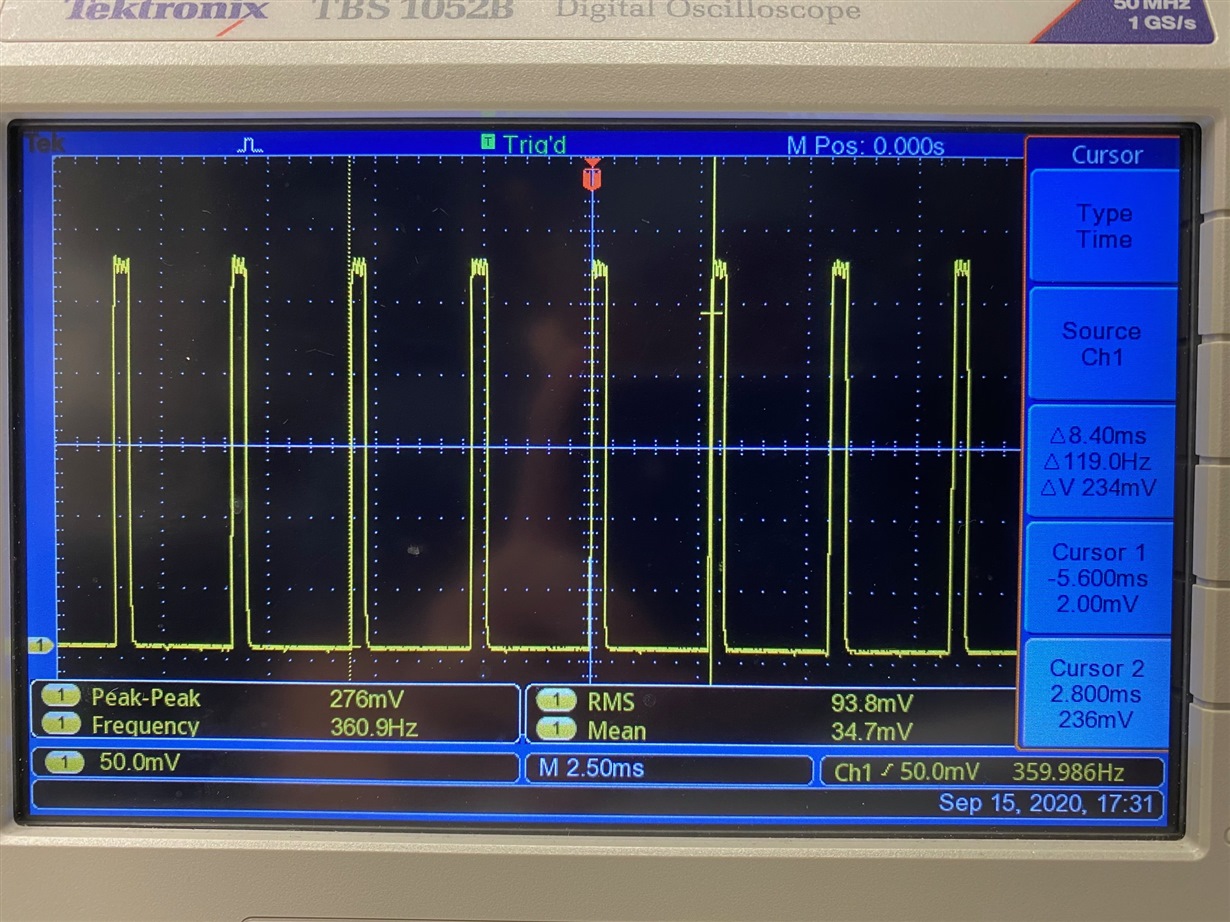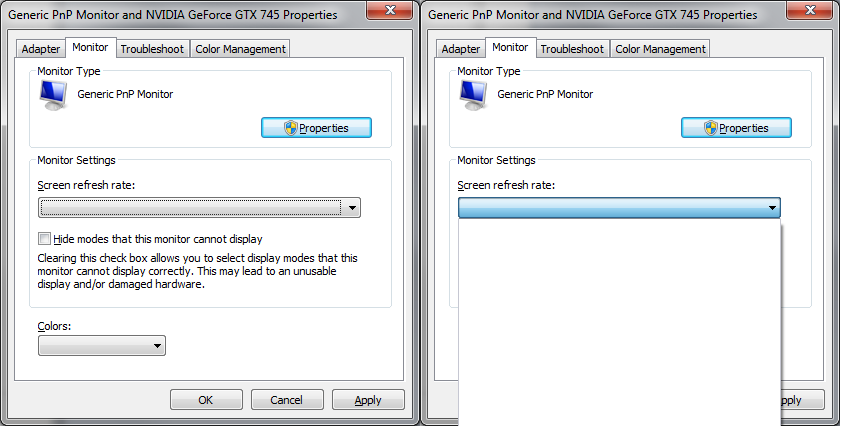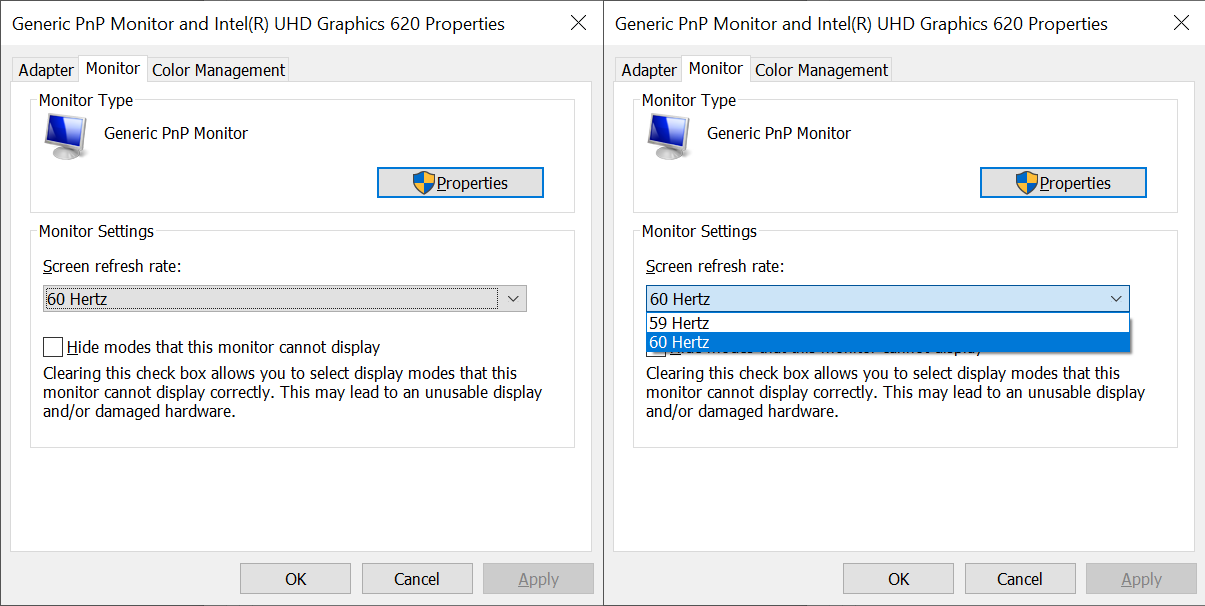Hello,
I am interested in using the DLPLCR4500EVM in Pattern Sequence Mode in order to output 24-bit images at 120 Hz. Specifically, I want to use a pattern of 24 1-bit images so that a binary-image framerate of 24*120 Hz = 2.88 kHz can be achieved.
I have set up the pattern using Hirak's suggested .ini file found in this thread and take measurements of the DMD output using a photodiode connected to an oscilloscope. My PC recognizes the 4500EVM as a projector/monitor and sets the refresh rate to 60 Hz. Under these settings, the pattern seems to be working flawlessly -- I am able to play binary images at 24*60 Hz = 1.44 kHz when I set the exposure time to 694 microseconds. I can also adjust the exposure time to e.g. 347 microseconds (2.88 kHz) and see that the DMD is able to keep up, but it spends half the time waiting for the next 60 Hz trigger.
Screenshot of GUI (pattern is R0 R1 R2 R3 R4 R5 R6 R7 G0 G1 G2 G3 G4 G5 G6 G7 B0 B1 B2 B3 B4 B5 B6 B7):
Alternating on and off 1.44 kHz (694 us exposure, 60 Hz refresh rate):
Alternating on and off (347 us exposure, 60 Hz refresh rate):
Main Problem
The issue arises when I try to go to 120 Hz. I am using an Nvidia GTX 745 on a Windows 7 PC. This video card has a dual-link DVI-D output which I connect to the HDMI port on the 4500EVM. I make a custom resolution using the Nvidia control panel at 912 x 1140 @ 120 Hz. What I observe is that the DMD outputs an on pulse (width 347 microseconds) every 2.78 ms (which corresponds to 1 second divided by 120 divided by 3). Furthermore, this output does not change depending on the input image i.e. it's unresponsive. I can attempt to show alternating B&W, all white (always on), all black (always off), but the result is always the same.
Output at 120 Hz refresh rate (always looks like this no matter the input pattern):
May I ask you guys about the details of your setup and how you get 120 Hz refresh rate working in Pattern Sequence? What cable do you use, what kind of video card, what is the video source, do you need a custom resolution, etc. I'm particularly interested in the cable you use, since as I understand, a DVI-D dual link to HDMI adapter will only send a single link signal, which can possibly limit the refresh rate.
Thanks for the assistance,
Jon


